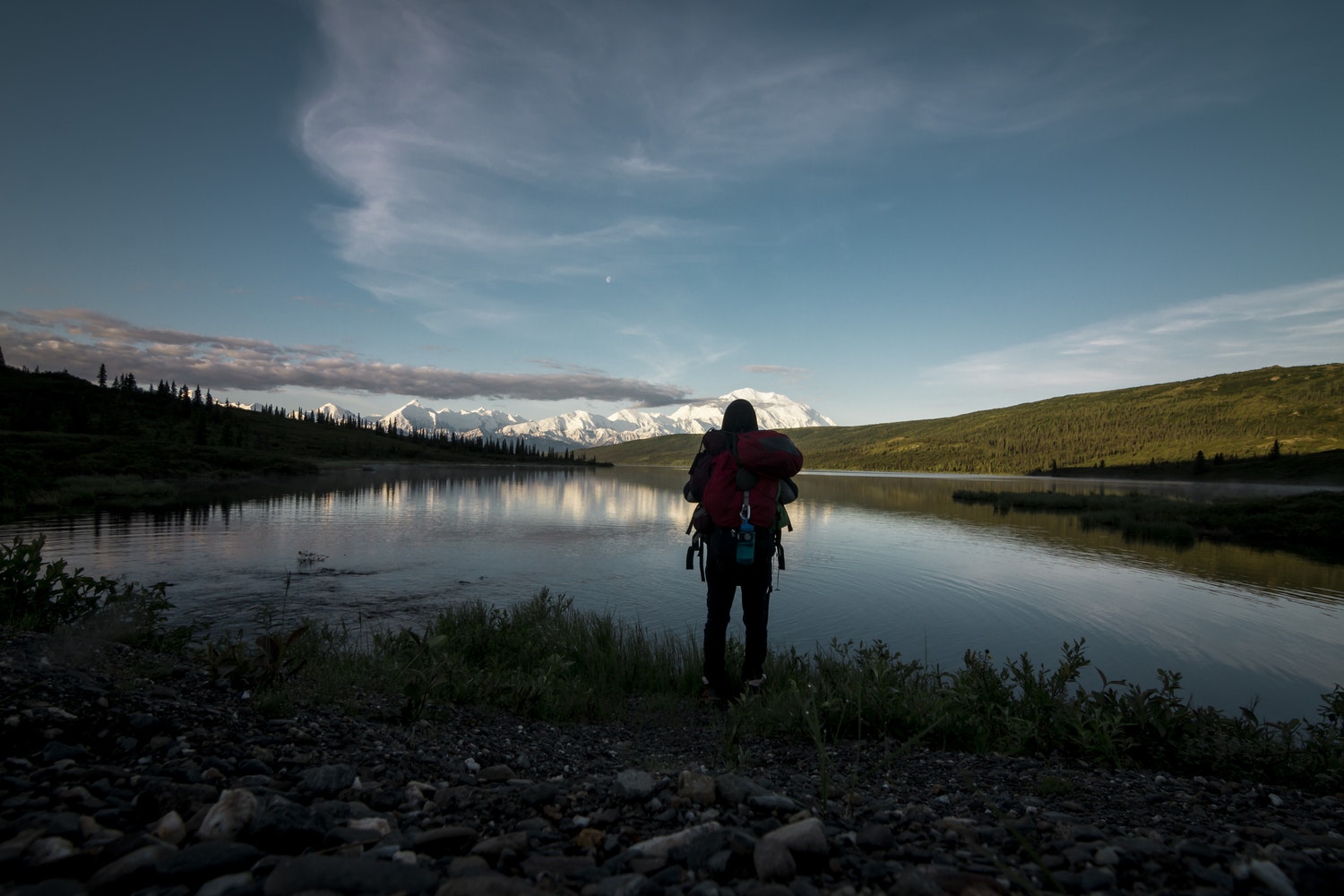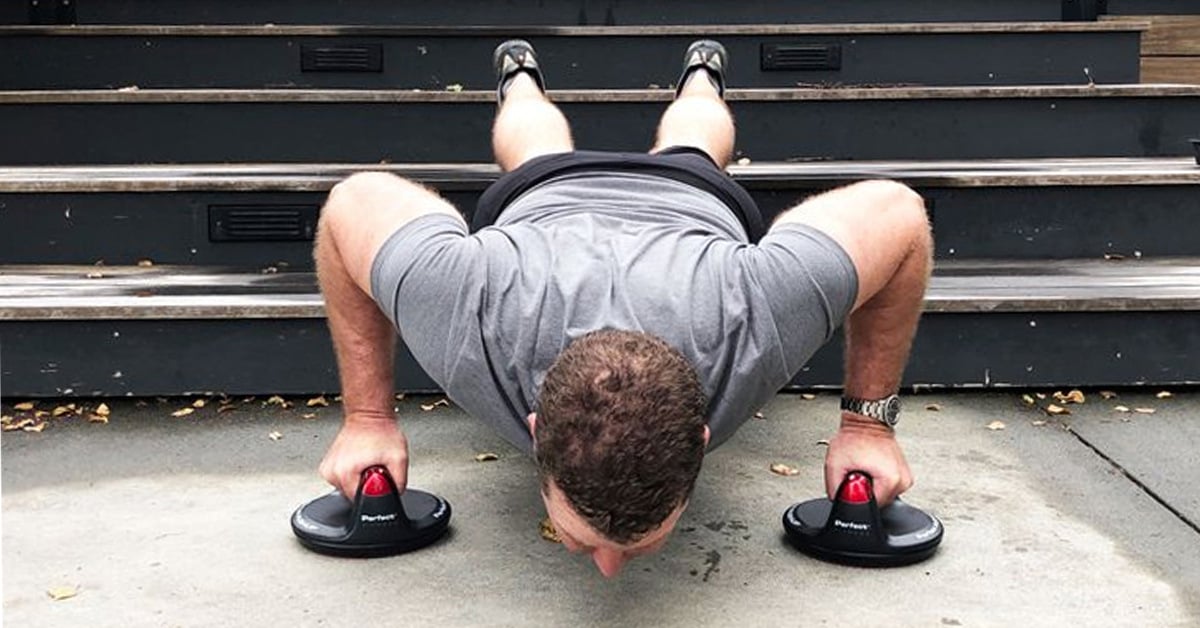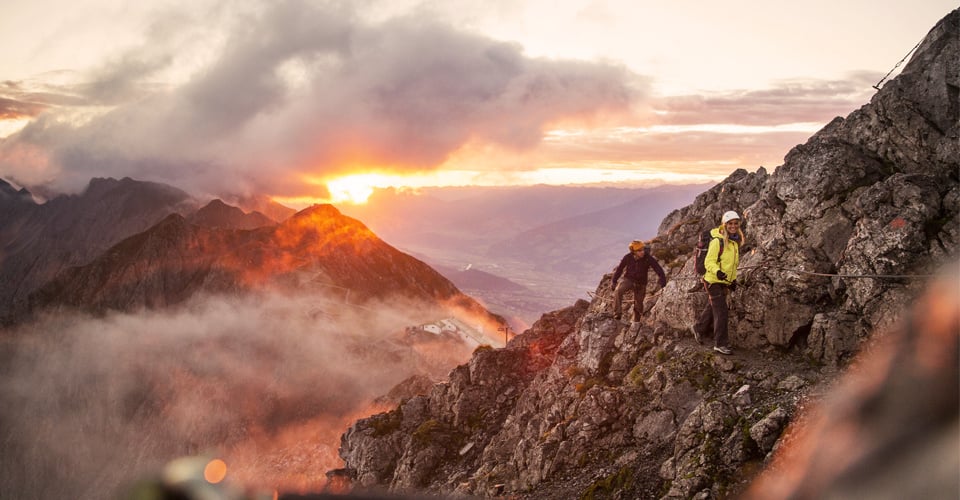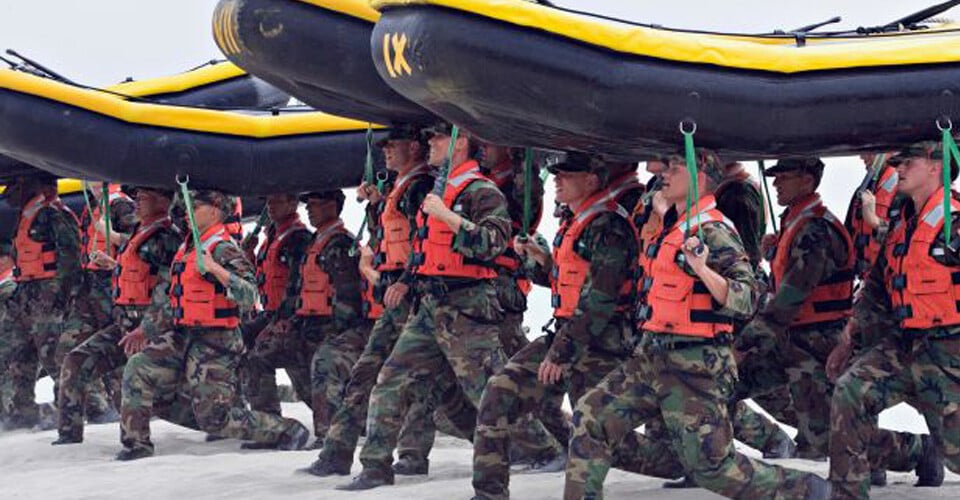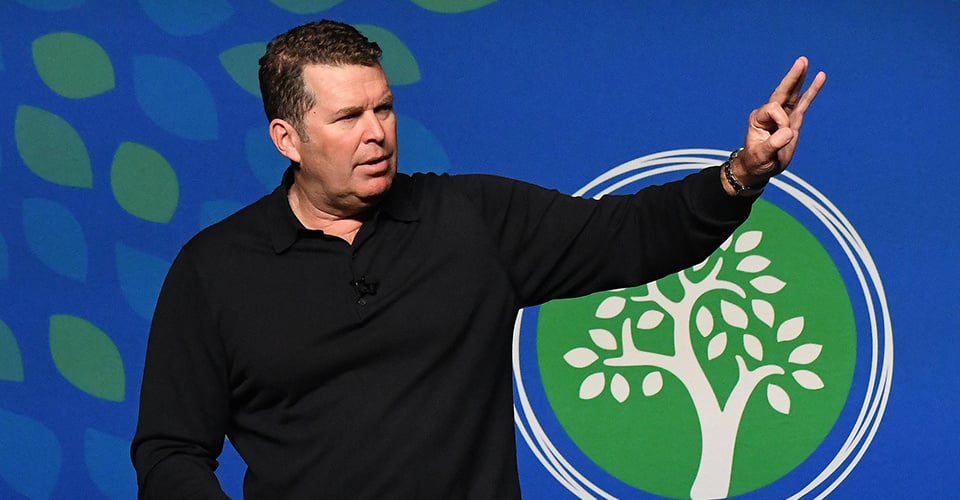I’ve written this post, and the ones that follow in this series, in hopes that it will inspire you to take action on something that pushes you into the unknown – perhaps past a perceived limit or perhaps to experience something only a few will ever appreciate. Climbing Denali was one such goal that pushed through some of my perceived limits, such as “can I breathe at 20,000 feet” to “I’m not sure I can hike for that long or that high.” I strongly believe that the more we push ourselves, the more we grow in experience and confidence – the struggle builds strength. May this series of posts inspire you to willingly move from your comfort zone into your struggle zone to push you past your current limits.
3Ps – Professional, Personal, Physical
Every December, I plan my next year’s goals. I break them into three categories – I call them “My 3 Ps”: Professional, Personal and Physical. Each category gets no more than 3 goals, and many times it’s just one main goal with a couple of supporting goals. For a few years, my physical goal would be a numerical value associated with weight loss or body fat percentage; and each time I did that I never seemed to hit the goal – I wouldn’t even get close. I lost interest somewhere over the first few months of the year and would promise myself that I would do better the following month. Over time, I decided to switch the goal from a weight-loss and stay-in-shape perspective to something more rewarding, where I was doing an activity that would help me keep my weight down and stay in shape, but that also gave me an experience. First, I did triathlons, then open water swimming, and now it’s mountain climbing – with friends.
Navy SEAL Exercises Boost Your Performance
I stumbled on this new physical goal, by chance, when three buddies asked me to join them on a “celebratory” climb for our 40th year of life. I loved the idea – no running or cold water, just a simple walk in the woods so to speak – at least that’s what I thought I was signing up for when I joined to climb Mt. Whitney 10 years ago. In all honesty, I knew very little about mountain climbing, other than the limited rappelling and rock climbing we did in SEAL Team. In fact, the largest mountain I had ever climbed was less than a third of the height of mountains I routinely skied with my boys in Tahoe. (I grew up in Massachusetts – the mountains I climbed were just over 4,000 ft in New Hampshire). Mt. Whitney, as I soon discovered (after agreeing to do the hike), is the tallest mountain in the continental (lower 48) United States at 14,500 feet. The only time I experienced that altitude was jumping out of an airplane – and I had an oxygen tank with me!
I’ll Just Use My Navy SEAL Mindset Training
Hiking Mt. Whitney was a lesson in preparation for me. For starters, I did none – I mean zero, nada, not a single practice climb – didn’t even wear my old SEAL boots once. Instead, I’d go for a run a couple of times a week and would convince myself with thoughts like these:
“How hard could it be?”
“I’m good – I’ll just use my Navy SEAL mindset to carry me through”
“This is going to be easy – probably should ‘save my legs’ for the climb”
I’m not kidding – I thought it was going to be more mental than physical, and I didn’t do a damn thing to prepare. Boy was I wrong – that climb was a humbling experience. For starters, I was the slowest one on the climb (nothing new, I thought to myself, as I was the captain of the Goon Squad in SEAL training – i.e., the slowest runner). We summitted Whitney by going up a more difficult route called the Mountaineer’s Route – It was hard, and even harder coming down. In our infinite wisdom, we decided to skip spending a rest night on the mountain and instead “sprint” down the mountain to get a steak dinner that we had all been fantasizing about while climbing. It didn’t go so well for me – I bonked so hard that my three buddies had to split up my gear, and one of them literally held me up while I stumbled down the last 1,000 feet – that was 10 years ago this June.
Climbing Denali to Help At-risk Youth “Reach their Summit”
Those three buddies – Brett, Chip and Tom – and I kept climbing. As hard as Mt. Whitney was, there was a remarkable sense of camaraderie – not to mention the majestic beauty of the mountain. We committed to climb another mountain the following year, and have done so throughout the past decade. We haven’t made all the climbs together, but each one built our confidence to experience another one just a little bit more challenging than the previous one, which brings me to our 50th year goal – climbing Mt. Denali. On May 25, 2018, I and other Senior Guardsmen (a committed team of Bay Area men who have mobilized their talents and resources to enhance and improve the lives of at-risk youth since 1947) embarked on a 21-day climbing expedition to Denali (aka Mt. McKinley) to create awareness for The Guardsmen and raise funds for The Guardsmen Scholarship Endowment Fund.
Climbing Denali Represented a Series of Firsts
At 20,310 feet, Denali is the tallest mountain in North America, and is one of the seven summits (the tallest mountain on each continent of the world). It isn’t just a really tall mountain, it’s considered one of the toughest – with brutally-cold temperatures, unpredictable weather, a small season for climbing (late May through early July), and unforgiving terrain (much of hike is spent on a glacier that is “moving” with crevasses and avalanches as daily obstacles). Hiking Mt. Denali represented a series of firsts, from the tallest mountain to the most days spent on a mountain, to the weight we carried (roughly 120 pounds – split between our backpacks and a sled). Preparing for Denali also involved a series of firsts: the first being we had to do a “checkout” climb with our guide on Mt. Rainier (a mountain we had climbed three years earlier – a climb we all considered our toughest at the time). As it would turn out, it took us a full year of preparation to climb Denali – I say a full year because I’m including the second Rainier hike as the starting point for our preparation. Incidentally, climbing Mt. Rainier is no cake walk, and I needed to prepare for that one; so you could say that the Denali prep time was at least longer than a year for me!
For Climbing Denali, My Preparation was Different
Our brains are pretty good at forgetting pain and only remembering the “sunny” moments of an event. There are a few moments, however, that my brain hasn’t forgotten – the pain. Those moments include the pain associated with an ergometer test (rowing machine), the last 500 yards of a 2,000 meter crew race, SEAL training and operations, hiking Rainier and now Denali. No amount of “sunny” memories will overshadow the memories of pure “put out” required to get up (and down) those mountains. Until I had the Mt. Whitney experience, my arrogance got the better of me and convinced me not to prepare. For Denali, my preparation was different – Training started 9 months out, with an intent of losing 10 pounds (at the time I weighed a svelte 252 pounds). I did lots of long slow steady pace work on a rowing machine. I dropped a few pounds, but not enough to stick with the tedium of the erg sessions. Six months out, I put on a pack weighing 40 pounds and started walking up local “hills” in our nearby park (Mt. Tamalpais). At first, I lulled myself into thinking this wouldn’t be as bad as I remembered, until our guide sent out a note stating: “by now you should be carrying 65 pounds in your pack and hiking at a 2 mile/hour pace for 3-4 hrs.”
Ouch. Here’s the Workout I Did for Climbing Denali
There’s big difference between 40 pounds and 65 pounds, and an even bigger difference between 2 hrs and 4 hrs of hiking. Incidentally, this training involves a water/snack break every hour for ten to 15 mins, so sessions are actually longer when you incorporate those breaks into the hiking. Here’s the good news – the weight fell off of me during those hikes – I lost 15 pounds in about 6 weeks. I didn’t carry 65 pounds on every hike (and our guide recommended only doing those long hikes with that weight a few times). Most of my prep hikes were done with weight between 45-50 pounds. On non-hiking days, I created a leg/core workout that I did religiously three times a week. Here’s the workout I did:
- Plank 2 minutes, 1 minute rest
- Plank 1:40 minutes, 1 minute rest
- Plank 1:20 minutes, 1 minute rest
- 40 pound slam ball over the shoulder (alternating) 30 reps x 4
- 25 pound dumbbells curls to shoulder presses 20 reps x 4
- 135 pound deadlifts 20 reps x 4
- Leg Blasters: 20 squats, 20 lunges, 10 jumping squats, 10 jumping lunges (x4)
- 75 pounds bent over rows 20 reps x 4
- Dead bug 20 reps x 4
- Bridges 20 reps x 4
This routine – which I worked up to – takes about 50 minutes, and would consistently put my heartrate into zone 5 (I use a Polar wireless heart rate strap and track on training workouts on the Polar app). The hardest section of this workout is the Leg Blaster section (from our guide: Walt of RMI). I found over time that the jumping lunges hurt my knees – I would modify it to get the same eccentric contraction (engaging the leg muscles in decelerating exercises) by stepping off a box/bench seat with one leg. In additions to the long hikes and my garage HIIT workout (High Intensity Interval Training) was going to a local 24-hour fitness club to use a stairmaster. Twenty-four-hour clubs have a month-to-month (cost $50/month), and as long as I timed it right (mornings are bad), I could get up to 90 minutes on the stairmaster. For those workouts, I used 50 pounds on my back, and worked my way up to 90 minutes with a 10-minute break in the middle of the workout for a 100 calorie snack and water. Two things I will change for future training sessions: heavier weight with fewer reps on the deadlift, and starting even earlier on longer slow steady hikes with weight. Though I started this routine in January, the flu went through my family in February and sidelined me for much of that month for training.
The Importance of Preparation
I cannot stress enough the importance of preparation – whether you are climbing a mountain or giving speech. Preparation not only prepares you for the task but also serves as confidence builder and reminder in the toughest moments while you seek achieve your goal. The long hikes that I feared during my training session for the sheer boredom of walking for hours became an enjoyable experience, thanks to my wife and occasional friends joining me. During the last two weeks before starting our expedition, I tapered the workouts by reducing the weight carried and distance covered. Our guides would warn us of over training or sustaining a training injury just before the hike. They mentioned that there’s a tendency for folks to try to “cram” more prep training in just before departing for the mountain, which often ends in an overuse injury.
The Importance of Getting the Right Guides
Besides my physical preparation, there was one more element to the preparation that was the difference maker for us to reach our goal to summiting Denali – getting the right guides. In our case, the guide that took us on our training “checkout” climb on Mt Rainier – Walter Hailes of RMI guide services – was also our Denali guide. We asked him to be our guide, not only because he had climbed Denali several times before (8 attempts/5 summits – better than the average which is roughly a 50% summit success rate), but also and equally important is his temperament. He’s easy going, unflappable, level-headed and, in our case, very patient at answering the same questions several times. He and his trusted assistant, “JM” another RMI guide, are the reason we were successful in reaching the Denali summit. Of course the weather helped, but they knew how to time it and they rested us in preparation for what became a small window of opportunity to stand at 20,310 feet. Brett, Chip, Taylor (another climbing friend) and I are eternally grateful to them for without their guidance we don’t believe we would have had the same result.
Of course, there’s only so much a guide can do. They can decide when, where and how long to hike but the actually hiking is up to you. This next post will be all about the strategies I used to stay focused on putting one foot in front of the other for 15 days on Denali. I’m going to break these into little sections and title each one – I believe you’ll see a pattern to them for these techniques are EXACTLY the same one I used (as have others) to accomplish dramatically different goals. Whether it’s summiting Denali or starting a business, the strategies for attaining your goals are the same.
Stay tuned for:
The Conversation – Summiting Your First Mountain – The One In Your Head
Chunking – Define it, Divide It, Do It Daily
Teammate Strength
Onward and upward!
Alden
